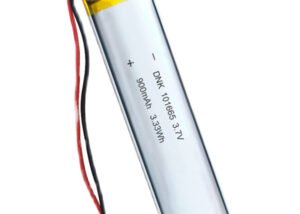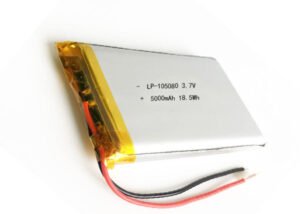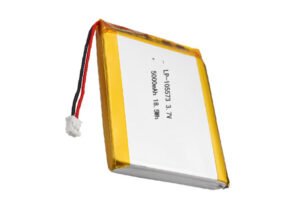LiPO Battery in Bicycle Computer
Bicycles have come a long way from their humble beginnings as simple modes of transportation. Nowadays, cyclists can choose from a wide range of high-tech gadgets and accessories to enhance their riding experience, including bicycle computers. These devices provide a wealth of information, such as speed, distance, and heart rate, to help cyclists track their progress and improve their performance. However, all of these features require a reliable source of power, which is where lithium polymer (LiPO) batteries come in.
This article will provide an overview of LiPO batteries and their importance in bicycle computers, as well as the advantages, safety considerations, and integration of these batteries in bicycle technology. Furthermore, we will explore the future developments and advancements of LiPO batteries in bicycle technology.
Advantages of LiPO Batteries in Bicycle Computers
LiPO batteries have several advantages over other types of batteries, which make them ideal for use in bicycle computers. These advantages include:
LIGHTWEIGHT and COMPACT: LiPO batteries are much lighter and more compact than other types of batteries with the same energy storage capacity. This makes them ideal for use in portable devices like bicycle computers, which need to be as small and lightweight as possible.
HIGH ENERGY DENSITY: LiPO batteries have a high energy density, which means they can store a lot of energy in a small space. This makes them ideal for use in devices that require a lot of power, like bicycle computers.
QUICK CHARGING TIME: LiPO batteries can be charged quickly, which is important for cyclists who need to get back on the road as soon as possible. This also means that they can be charged more frequently, which helps to extend their lifespan.
LONG LIFESPAN: LiPO batteries have a longer lifespan than other types of batteries, which means they can be used for a longer period of time before needing to be replaced. This helps to reduce the cost and environmental impact of battery replacement.
LiPO battery safety considerations
While LiPO batteries have many advantages, they also require proper handling and storage to ensure their safety. Some of the safety considerations for LiPO batteries include:
Proper handling and storage: LiPO batteries should be handled and stored carefully to avoid damage or punctures, which can cause them to leak or catch fire. They should be stored in a cool, dry place, away from direct sunlight and heat sources.
Overcharging and over-discharging prevention: LiPO batteries should not be overcharged or over-discharged, as this can cause them to overheat and become unstable. Most LiPO batteries come with built-in protection circuits to prevent overcharging and over-discharging, but it is still important to use a charger that is designed for LiPO batteries and to follow the manufacturer’s instructions.
Monitoring and maintenance: LiPO batteries should be monitored regularly to ensure that they are functioning properly and to detect any signs of damage or wear. It is also important to follow the manufacturer’s instructions for maintenance and replacement of the battery.
Integration of LiPO batteries in bicycle computers
Many modern bicycle computers use LiPO batteries as their power source. These batteries are typically integrated into the device and are not user-replaceable. Some of the factors to consider when integrating LiPO batteries into bicycle computers include:
Types of bicycle computers that use LiPO batteries: There are many different types of bicycle computers on the market, and not all of them use LiPO batteries. Cyclists should look for devices that are specifically designed to use LiPO batteries, as they will provide the best performance and reliability.
Installation process and compatibility: LiPO batteries are typically integrated into the device, so there is no need for cyclists to install them separately. However, it is important to ensure that the device is compatible with LiPO batteries and that the installation process is straightforward.
Battery life and performance monitoring: LiPO batteries have a longer lifespan than other types of batteries, but they still need to be monitored regularly to ensure that they are functioning properly. Many bicycle computers come with built-in battery life and performance monitoring features, which can help cyclists to keep track of their battery usage and detect any problems early on.
Future developments and advancements of LiPO batteries in bicycle technology
As technology continues to advance, there is great potential for further developments and advancements in LiPO batteries and their integration into bicycle technology. Some of the potential areas for growth and development include:
Increased capacity and efficiency: LiPO batteries are already highly efficient, but there is potential for even greater capacity and efficiency in the future. This could lead to longer battery life and better performance in bicycle computers and other portable devices.
Integration with other bicycle components: LiPO batteries could be integrated with other bicycle components, such as lights and GPS systems, to provide a more seamless and integrated riding experience.
Benefits for cyclists and the environment: The continued development of LiPO batteries and their integration into bicycle technology could provide many benefits for cyclists and the environment. For example, longer battery life and better performance could reduce the need for frequent battery replacement, which would help to reduce waste and save money.
In all, LiPO batteries are an important component of bicycle computers and other portable devices. They offer many advantages over other types of batteries, including lightweight and compact design, high energy density, quick charging time, and long lifespan. However, they also require proper handling and storage to ensure their safety. The integration of LiPO batteries into bicycle computers is straightforward, with many devices already using these batteries as their power source. The future of LiPO batteries in bicycle technology looks bright, with potential for increased capacity and efficiency, integration with other bicycle components, and benefits for cyclists and the environment.






















